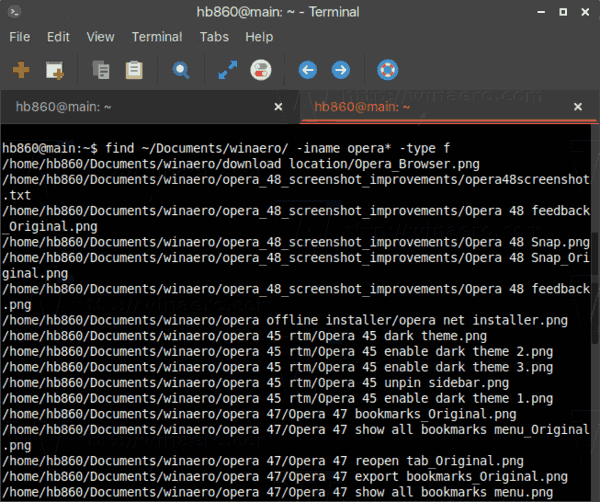


- #Linux find file name containing string how to
- #Linux find file name containing string trial
- #Linux find file name containing string download
Download RHEL 9 at no charge through the Red Hat Developer program.While I can't list all options, here are some other useful examples: So far in this article, you've seen some of them. The grep command provides many options to change how it searches for patterns or displays results. You can filter long command outputs with grep, making finding useful information easier. This is a fast and useful way to filter a command's output to match the text pattern you're looking for.įor example, if you want to check whether the package openssh is installed in your Fedora or Red Hat Enterprise Linux (RHEL) operating system, you can pipe the output of command rpm -qa, which lists all installed packages, into grep to search for the pattern: $ rpm -qa | grep ssh Similar to other Unix utilities, grep also acts on stdin when you pipe the output of another command into it. The grep command is fast and returns results quickly, but it may take a long time if you specify too many files or subdirectories to search. To run the search recursively in multiple subdirectories, use the command line flag -R: $ grep -R ^Port /etc When you use multiple files, grep shows the name of the file where it found a match before showing the matched line. For example, to search for a configuration in two files: $ grep Port /etc/ssh/sshd_config /etc/ssh/ssh_config To find text in multiple files simultaneously, specify which files to search from after the first file name, or use a shell wildcard such as * for all files. Similar to finding text patterns in a single file, you can use grep to find text in multiple files or directories. Find text in multiple files and directories For additional information, look at Regular expression on Wikipedia or Regular expressions 101. However, regular expressions are a huge topic.

Regular expressions are a big part of grep, making it powerful and flexible. For example, to find all lines that end with none in sshd_config, use grep like this: $ grep none$ /etc/ssh/sshd_config You can also look for lines that end with a text pattern by using the $ operator. For example, to search for a pattern that contains the word Port followed by numbers, use this regular expression: $ grep -E "Port +" /etc/ssh/sshd_config You can also use extended regular expressions with the command-line parameter -E. This time grep returned only the line that started with Port since, in the second line, the expression Port is in the middle. For example, to find only lines that start with the word Port, you can use the regular expression operator ^, like this: $ grep ^Port /etc/ssh/sshd_config To avoid that, you can use regular expressions to be more specific about what you're looking for. In other cases, grep could find too many entries that you're not interested in, requiring you to sort through them to find the desired information. In some cases, that's exactly what you want. The line you were looking for, Port 22, and an additional line containing the search pattern. In the previous example, when you searched for Port in the SSH configuration file, grep returned two lines. Notice that grep finds all lines that match the text pattern regardless of where the pattern is located.
:max_bytes(150000):strip_icc()/linux-find-file-type-6f748750373d449fa8506b263d9d72da.jpg)
For example, to find which port the Secure Shell (SSH) daemon uses, search for Port in file /etc/ssh/sshd_config: $ grep Port /etc/ssh/sshd_config To do this, type grep followed by the text pattern to search for and the file name to search in. The most basic way to use grep is searching for text in a single file.
#Linux find file name containing string how to
This article covers how to use the grep command to find text. Using grep, you can quickly find text matching a regular expression in a single file, a group of files, or text coming from stdin using the shell pipe operator. However, its main functionality is still the same. Grep evolved over the years, and the most common version available today for Linux, GNU grep, has additional features such as colored output. This utility was originally developed for the Unix operating system in the early 1970s. The most common way to find text in a Linux system is using the command-line utility grep.
#Linux find file name containing string trial


 0 kommentar(er)
0 kommentar(er)
